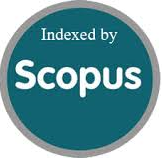
Following ethical guidelines is required in scientific publishing. Understand IEEE’s publishing guidelines and concepts to ensure ethical requirements are met. Learn about authorship, how to cite sources appropriately, plagiarism, how to report your data accurately, and the importance of publishing original research.
Who should be listed as an author on your paper? The IEEE definition of authorship will help you answer that question and clarify each author’s responsibilities..
IEEE considers individuals who meet all of the following criteria to be authors:
Contributors who do not meet all of the above criteria may be included in the Acknowledgment section of the paper. Omitting an author who contributed to your paper or including a person who did not fulfill all of the above requirements is considered a breach of publishing ethics.
Source: IEEE Publication Services and Products Board Operations Manual,Section 8.2.1.A.1.
Who should be listed as an author on your paper? The IEEE definition of authorship will help you answer that question and clarify each author’s responsibilities..
Note that the same rules apply to your own previously published work. When in doubt, include a citation.
Citing an irrelevant source for the purpose of artificially inflating citation metrics is considered a breach of ethics. Only cite relevant sources that legitimately contribute to your paper according to the criteria outlined above..
Learn how to avoid plagiarism. IEEE defines plagiarism as the use of another’s ideas, processes, results, or words without explicitly acknowledging the original author and source.
Plagiarism in any form is unacceptable and is considered a serious breach of professional conduct, with potentially severe ethical and legal consequences ( IEEE Publication Services and Products Board Operations Manual, Section 8.2.1.B.7. ). Follow proper citation practices noted above to avoid plagiarism.
All papers are checked for plagiarism before publication in the IEEE Xplore® Digital Library. I
When submitting your paper for publication, it should:
IEEE recognizes that technical research often follows an evolutionary publishing process. For example, research may be published first as a conference paper with preliminary findings, and then as a journal article with fully developed research and conclusions. IEEE supports this process provided that:
Source: IEEE Publication Services and Products Board Operations Manual, Section 8.1.7.E.
Readers of your paper rely on you to communicate your research findings fully and report your data accurately. Ensure you are showing the full picture by avoiding fabrication, falsification, and image manipulation during your research and when you are writing or revising your paper.
Avoid:
The Office of Research Integrity, U.S. Department of Health and Human Services.